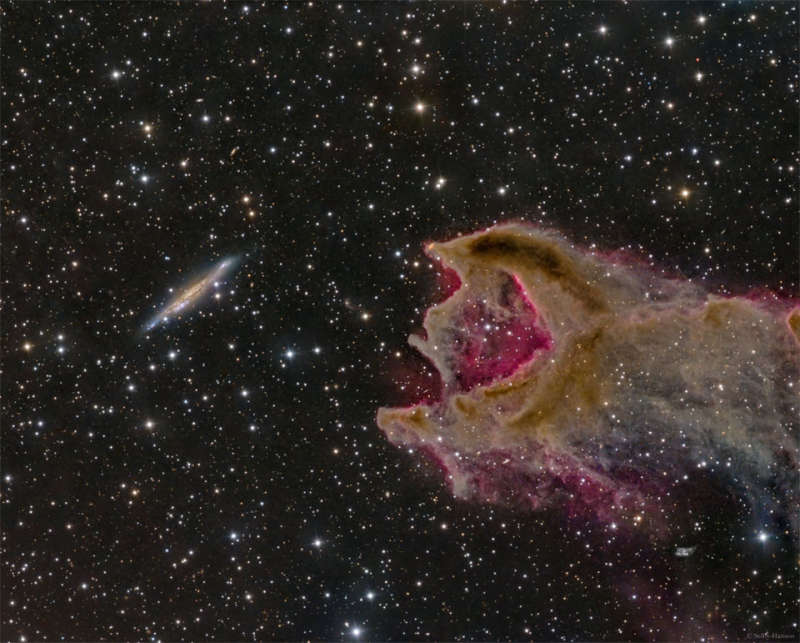
|
Credit & Copyright: Mike Selby &
Mark Hanson
Explanation:
Can a gas cloud eat a galaxy?
It's not even close.
The "claw" of this odd looking "creature" in the
featured photo is a gas cloud known as a
cometary globule.
This globule, however,
has ruptured.
Cometary globules
are typically characterized by
dusty heads and
elongated tails.
These features cause cometary
globules
to have visual similarities to
comets,
but in reality they are very much different.
Globules are frequently the birthplaces of stars,
and many show very young
stars in their heads.
The reason for the rupture in the head of this
object is not yet known.
The galaxy
to the left of the globule is huge, very far in the distance, and only placed near
CG4 by
chance superposition.
Discovery + Outreach:
Graduate student research position open for APOD
|
January February March April May June July August September October November December |
| |||||||||||||||||||||||||||||||||||||||||||||||||||||||
NASA Web Site Statements, Warnings, and Disclaimers
NASA Official: Jay Norris. Specific rights apply.
A service of: LHEA at NASA / GSFC
& Michigan Tech. U.
Based on Astronomy Picture
Of the Day
Publications with keywords: cometary globule
Publications with words: cometary globule
See also:
